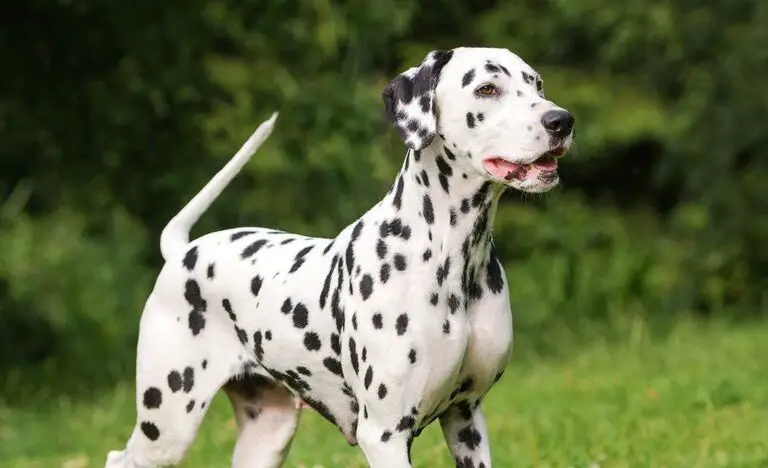Dalmatians are known for their distinct spotted pattern on a white background. These spots are well-rounded with smooth edges, range in size, and are unique to the breed. The spots can be of various colors and patterns but black and liver are the only accepted colors as per the breed standard.
But is it possible for a Dalmatian to be pure white with no markings?
Most Dalmatians are born white without the spots that they are known for. These spots start to appear 1 or 2 weeks after birth and continue to intensify into adulthood. However, it is genetically impossible for an adult Dalmatian to have a pure white coat free of colored spots.
Scroll on to learn why
Why Dalmatians are not pure white
All Dalmatians inherit 2 copies of the piebald gene, 1 copy of the roaning gene, and 2 copies of non-flecking. These are the genes that influence the unique coloration. Let us see what each gene does.
- Piebald gene (Sp)– The piebald gene (Sp) is a white spotting gene that is responsible for the white background color in Dalmatian. This is a mutation of the MITF gene that is crucial for the transport of pigment-forming cells to the skin and hair shaft. The mutation blocks the color pigment from reaching the skin and coat causing the dog to appear white. All Dals have 2 copies of this gene variant (SpSp) causing them to have an extreme piebald coloration (the entire coat is white). However, because of the presence of the roaning gene, colored markings appear on a pup’s coat sometime after birth.
- Roaning gene (R)– The roaning gene causes colored hairs to appear interspersed into an otherwise white coat. This gene only affects dogs that are white due to white spotting genes such as piebald. Roaning is an incomplete dominant gene and thus the amount of roaning will depend on whether a dog has one (Rr) or 2 copies (RR) of the gene. All dogs with at least one copy of the gene will have some level of roaning but one with 2 copies will have more colored hairs covering the white coat. Research has revealed all Dalmatians have at least one copy of roaning hence why no Dally is white into adulthood.
- Non-flecking (f)– The non-flecking gene consolidates the colored roan hairs into evenly distributed spots on the coat. Non-flecking (f) is recessive to flecking (F) and thus 2 copies of non-flecking (ff) should be present to localize the colored hairs. Any dog that is FF or Ff at the theorized F-locus will have the typically roaning pattern. All Dalmatians are believed to be ff at the F-locus hence the unique pattern.
To Sum Up
As you can deduce from the above, a purebred Dalmatian can’t be white because of the ever-present roaning gene.
This gene causes colored hairs to appear on an otherwise all-white coat. A Dalmatian pup may be born pure white but at around 2 weeks pale-colored spots start to appear and become more prominent with age. This is why a Dalmatian cannot be pure white.
Did you find this helpful? Share your thoughts and feedback in the comment section below.
There you go, WOOF!

